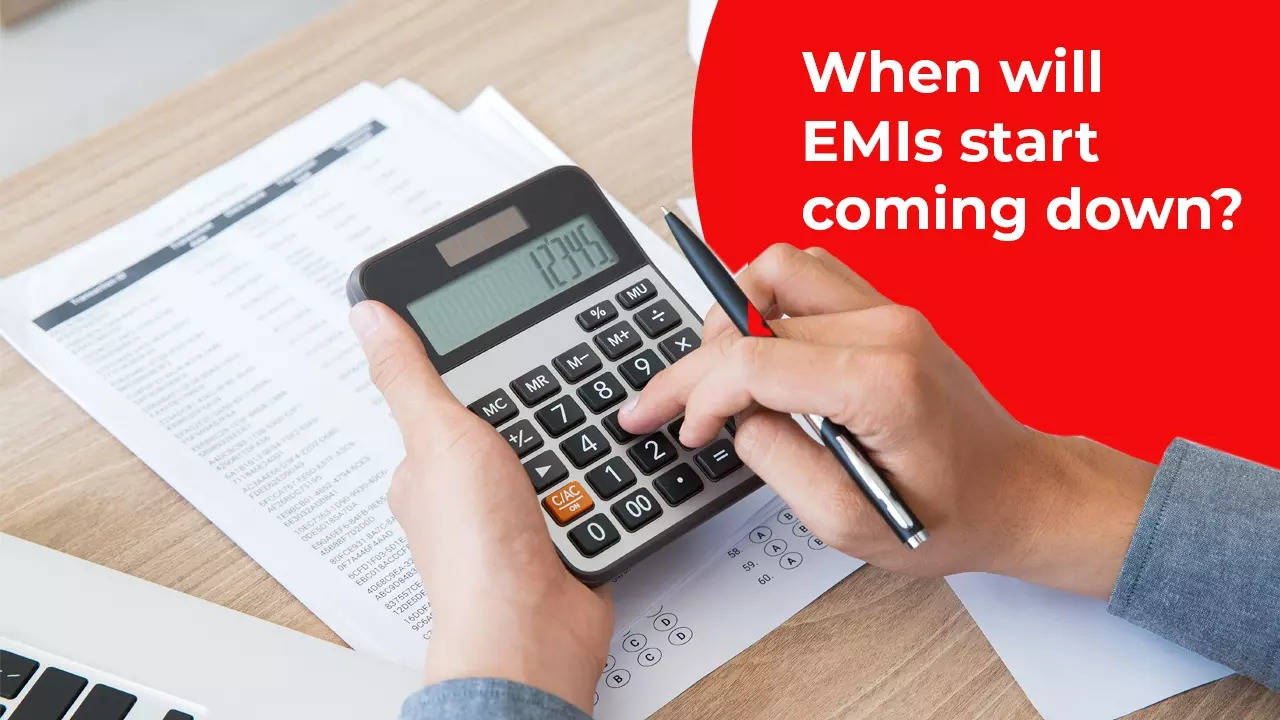[ad_1]
But since the last five Monetary Policy Committee (MPC) meetings, including today’s, the repo rate has been kept unchanged at 6.5%. What does this signal for home and car loan borrowers? When will the repo rate, and in turn the loan interest rates, start coming down?
Experts are of the view that the turn around on interest rates is likely but since the RBI governor Shaktikanta Das’ statement reflects that the war on inflation is not yet over, a timeline on EMIs coming down is difficult to predict.
Adhil Shetty, CEO, Bankbazaar.com says that today’s announcement to keep the repo rate unchanged has come at a time when inflation though showing signs of easing, continues to be a persisting issue. Crude oil prices are showing signs of easing, and may contribute to bringing about global economic stability. “As a result, the possibility of the central bank slashing rates may be on the cards. Today’s announcement to maintain the pause on the key rates will provide continued relief to borrowers, especially with regard to managing debt and household expenses,” he said.
Vivek Iyer, Partner, Grant Thornton Bharat notes that like all the advanced economies who have left the rates unchanged, the RBI stance also reflects the belief that the war on inflation is not over and that there are still looming uncertainties that need to be evaluated continuously to take a balanced approach towards economic growth.
How much have your loan EMIs risen?
Adhil Shetty of Bankbazaar.com explains that over the last 20 months, the repo rate shot up from 4% to 6.5%, and many home loan borrowers have seen a corresponding increase in their home loan interest rates.
“As the repo rate skyrocketed from 4% to 6.5% over the last 20 months, the debt burdens of home loan borrowers ballooned, as EMIs increased and loan tenures extended, sometimes well beyond retirement age,” Adhil tells TOI.
The BankBazaar Aspiration index data suggests that more than half the people have seen their interest rates increase by 1-3% and their EMIs go up by anywhere between Rs 2000-10,000. “On an average, borrowers who were looking at 7% rate of interest on their loan before their hike saw their rate of interest balloon to 9.5% and EMIs go up by Rs 158 per lakh, from Rs 775 per lakh to Rs 932 per lakh,” he added.
What’s the road ahead for EMIs and loan borrowers?
Atul Monga, CEO and Co-Founder, Basic Home Loan believes that the RBI’s choice to keep repo rates the same will affect home loan interest rates in different ways. “On the good side, a steady repo rate means RBI is still supporting economic recovery. This might make banks keep offering good home loan rates to boost housing demand. But because of inflation, banks might be careful and not lower rates too much,” he tells TOI.
According to Atul Monga, people looking for homes can still find affordable options, but the rates might not go down a lot.
He advises that it’s a good idea for potential homebuyers to watch the market and think about refinancing to take advantage of good lending conditions and get the most financial benefits in the changing interest rate situation.
Adhil Shetty says that to combat the pressure of the rate hikes, existing borrowers can explore switching to lower home loan rates and continue to prepay a part of the loan to reduce the burden.
Adhil Shetty believes that refinancing has been a boon for existing borrowers. “Banks slashed the spread on the home loan sharply from a high of 3-3.5% on the repo to as less as 1.8% in some cases. This meant that the effective increase in interest rates for new borrowers and existing borrowers who refinanced their loan was around 1.5%,” he notes.
“Fixed deposits have also witnessed greater interest following the rate hikes. Customers can lock in their money in FDs of shorter tenures offering higher returns. To maximise returns, they can also explore strategies such as laddering,” he concludes.
[ad_2]
Source link

